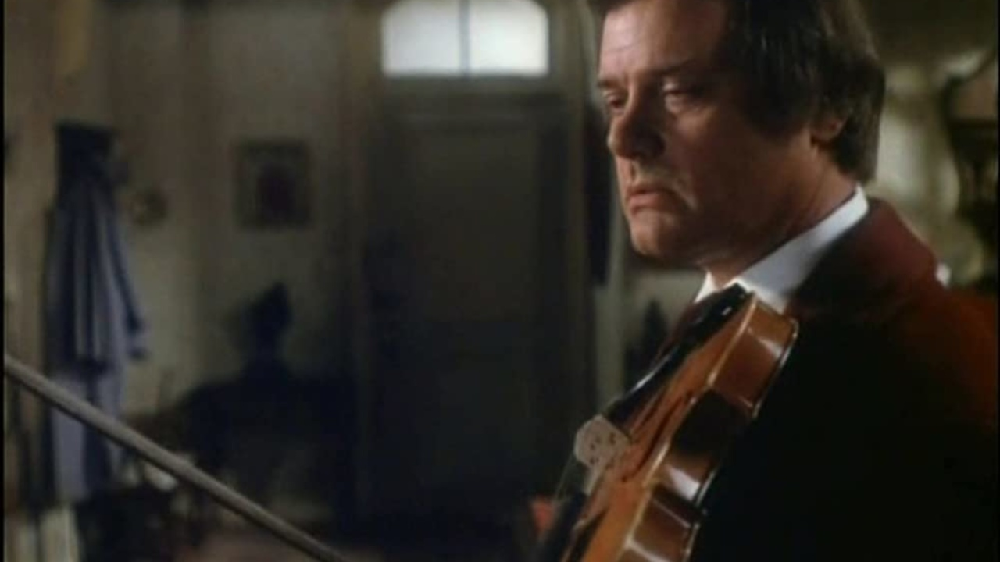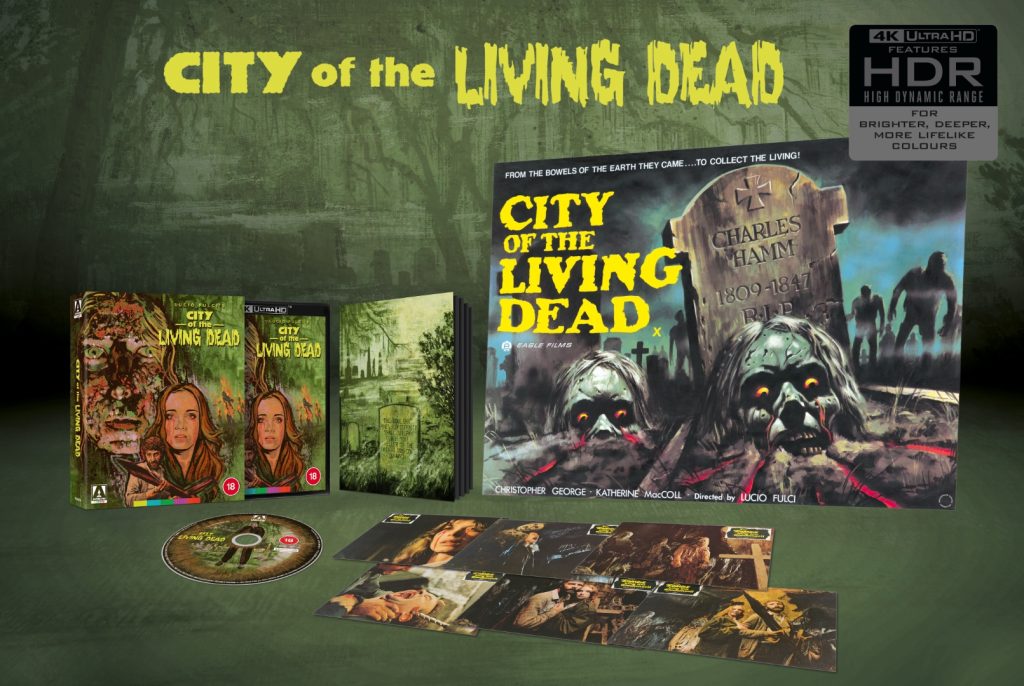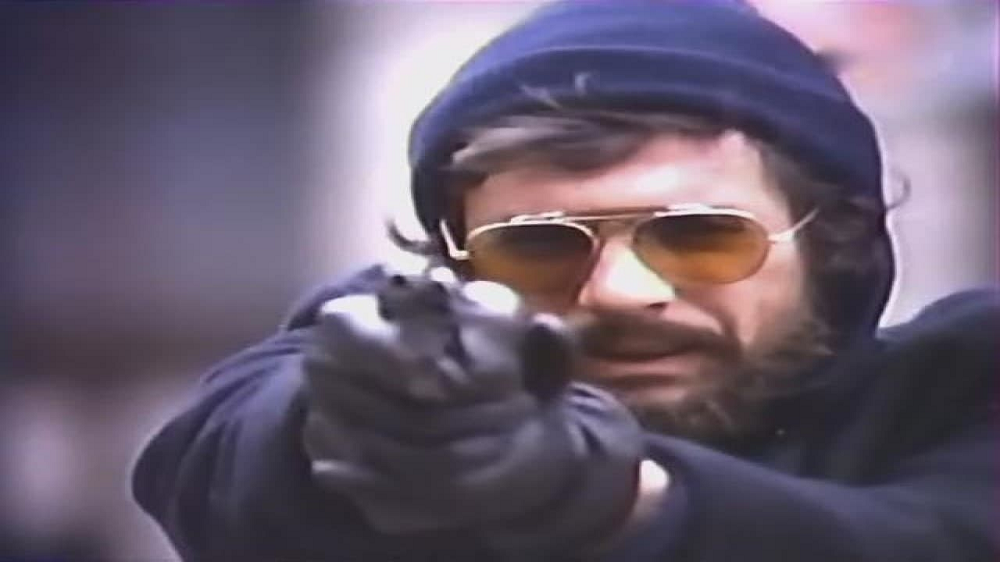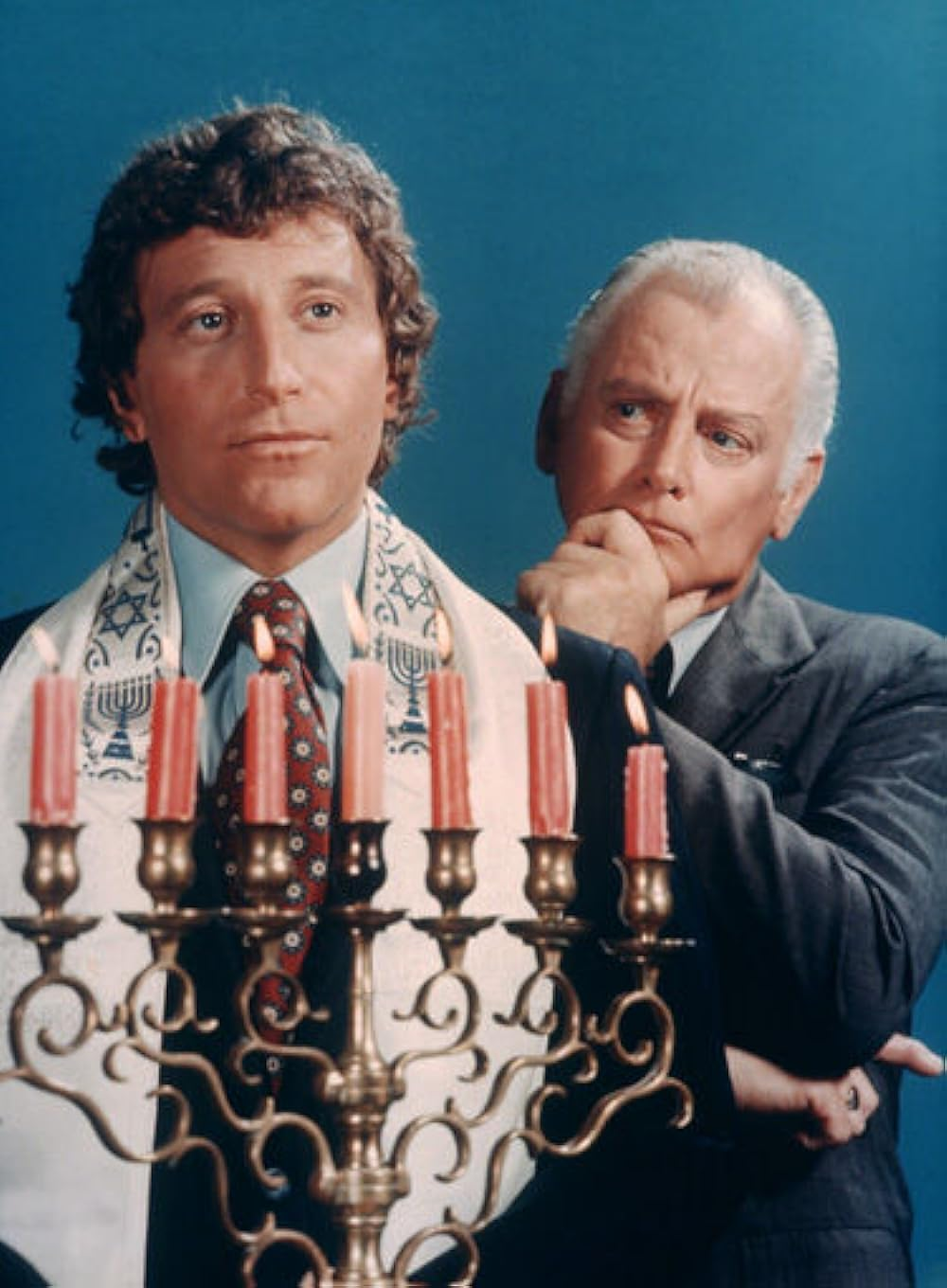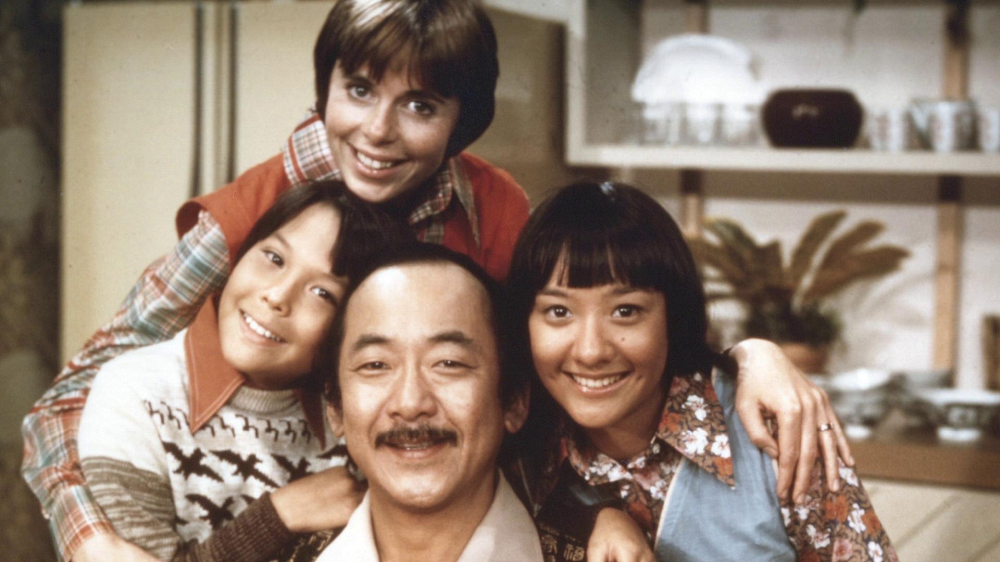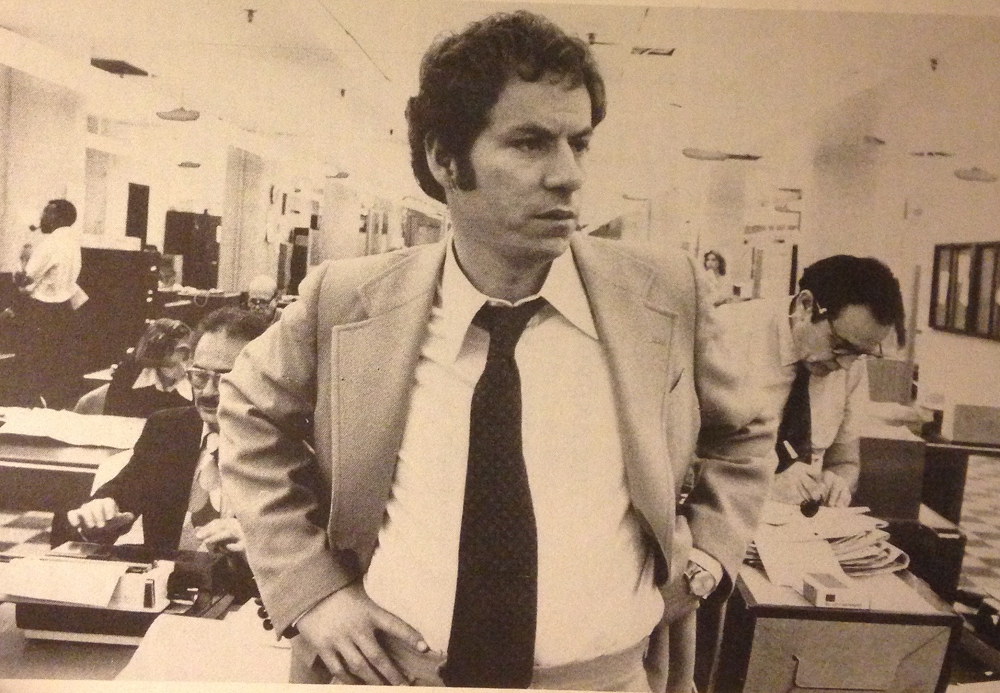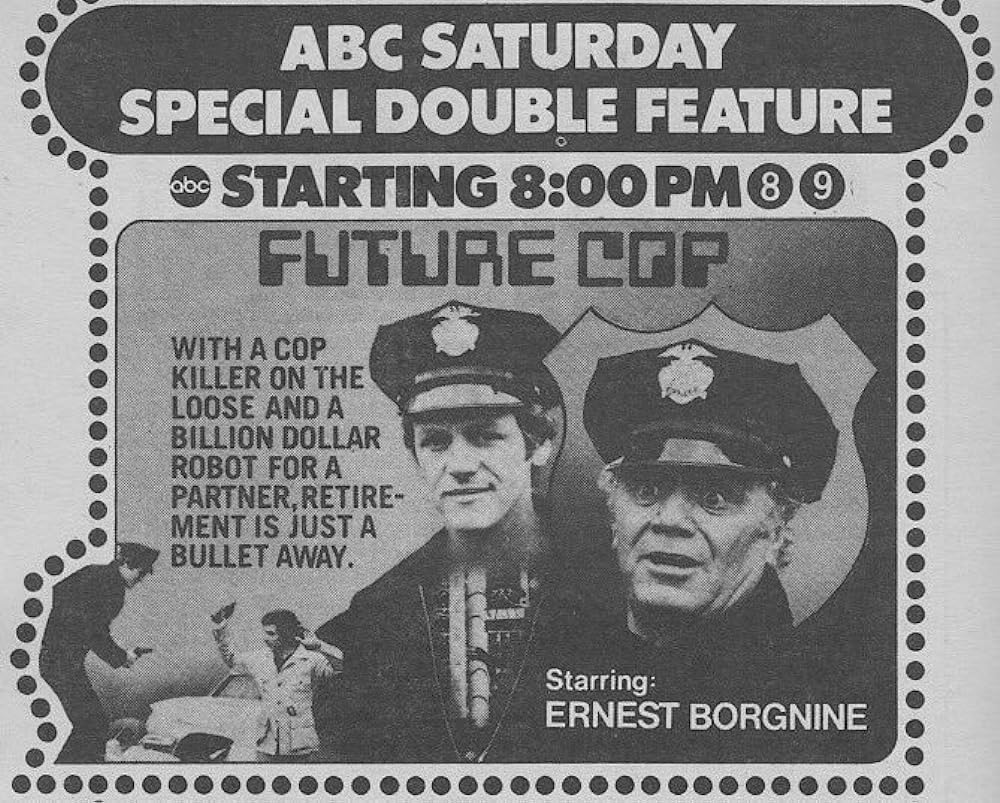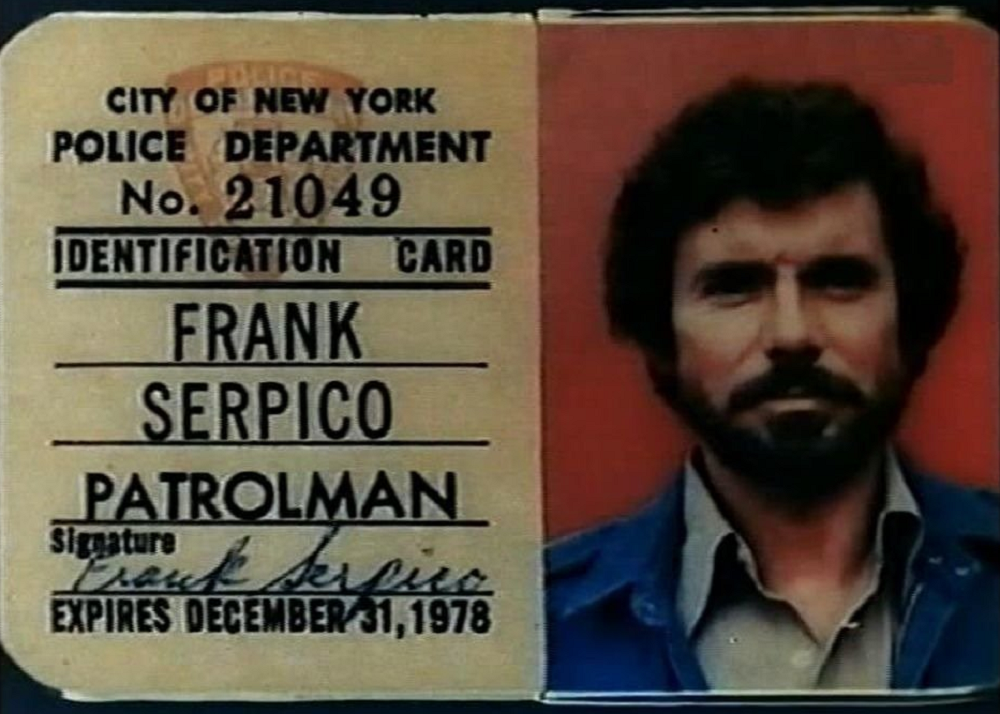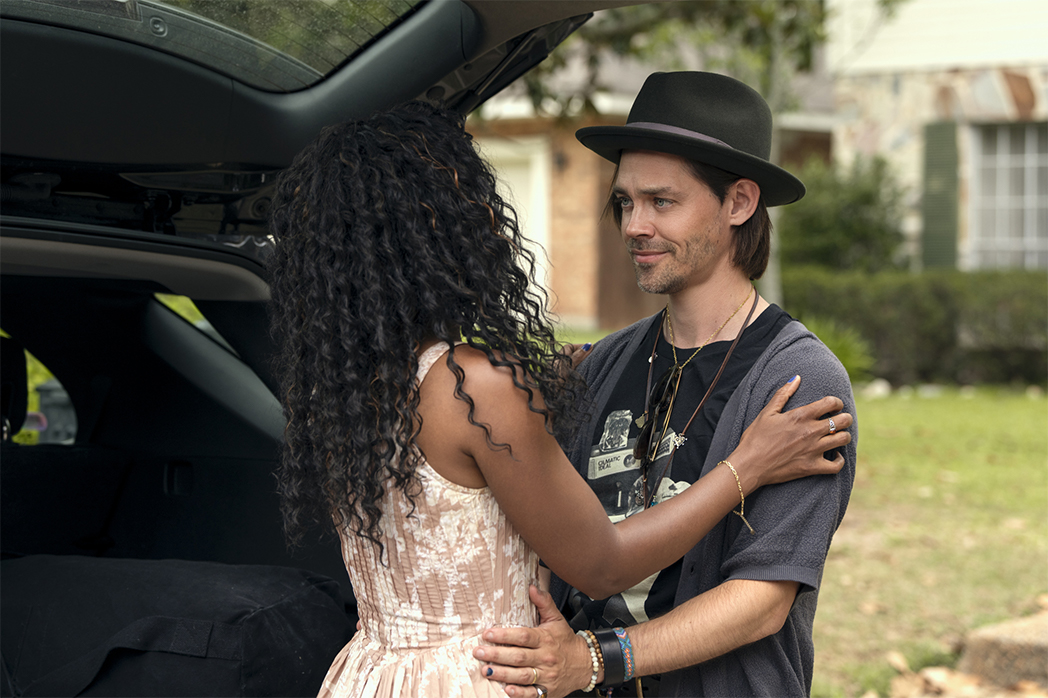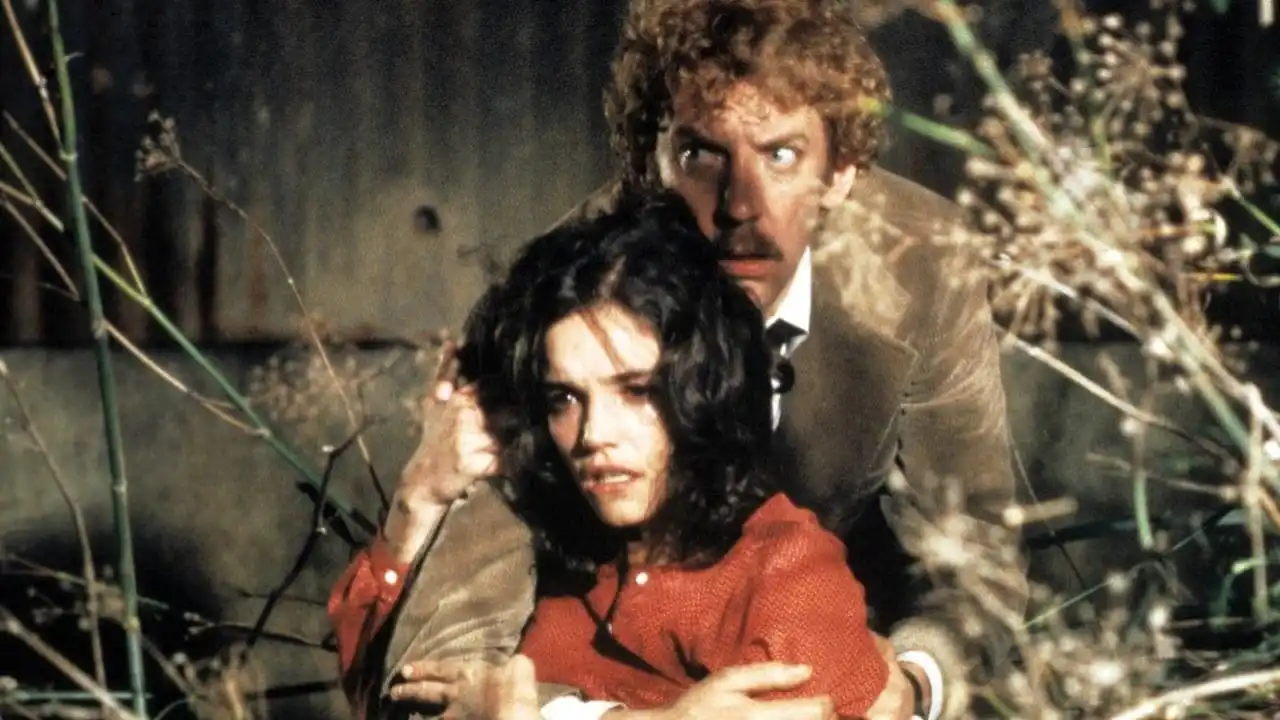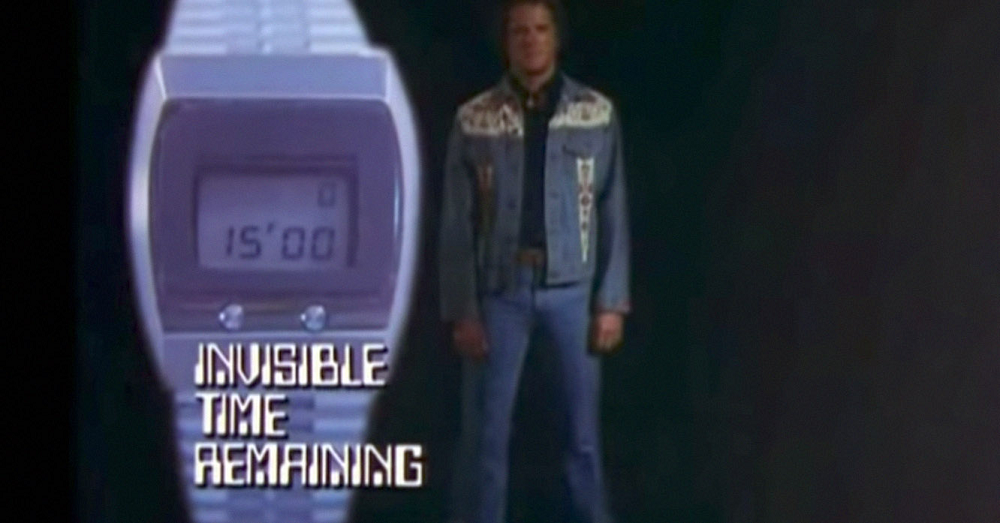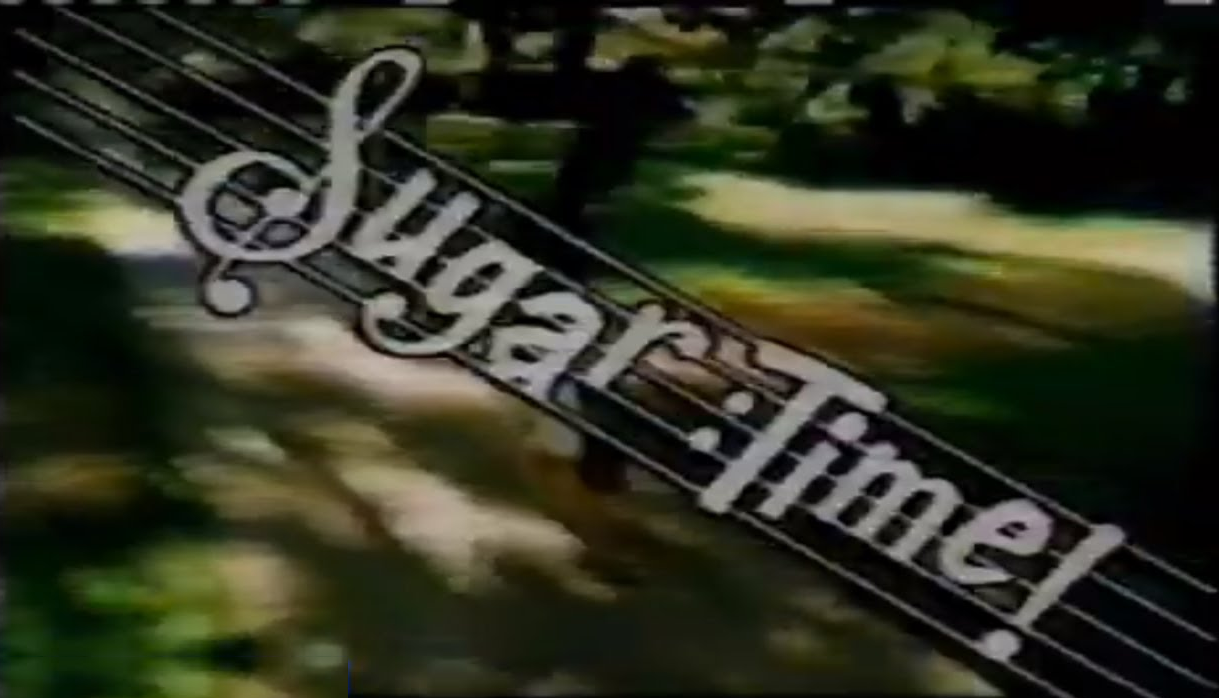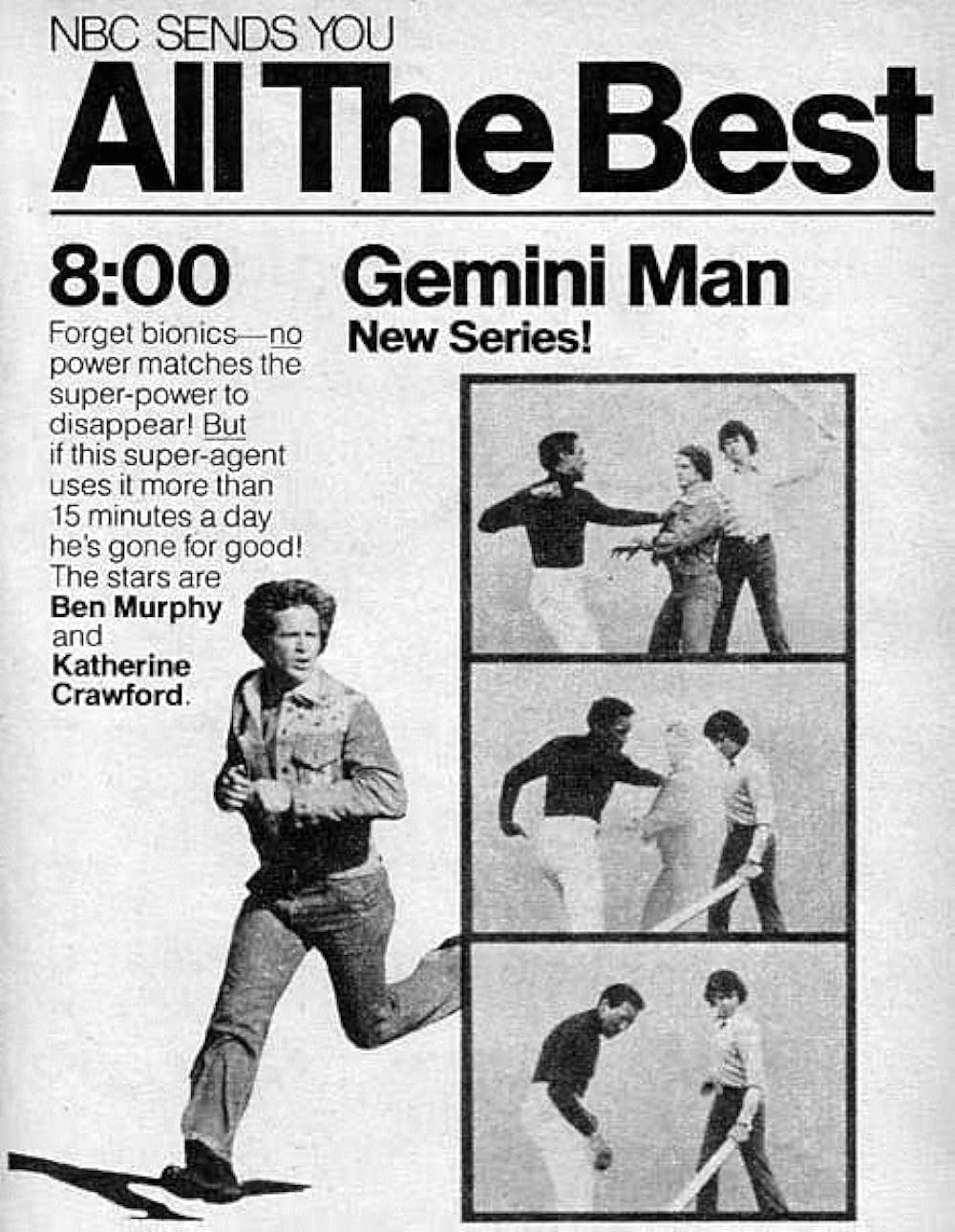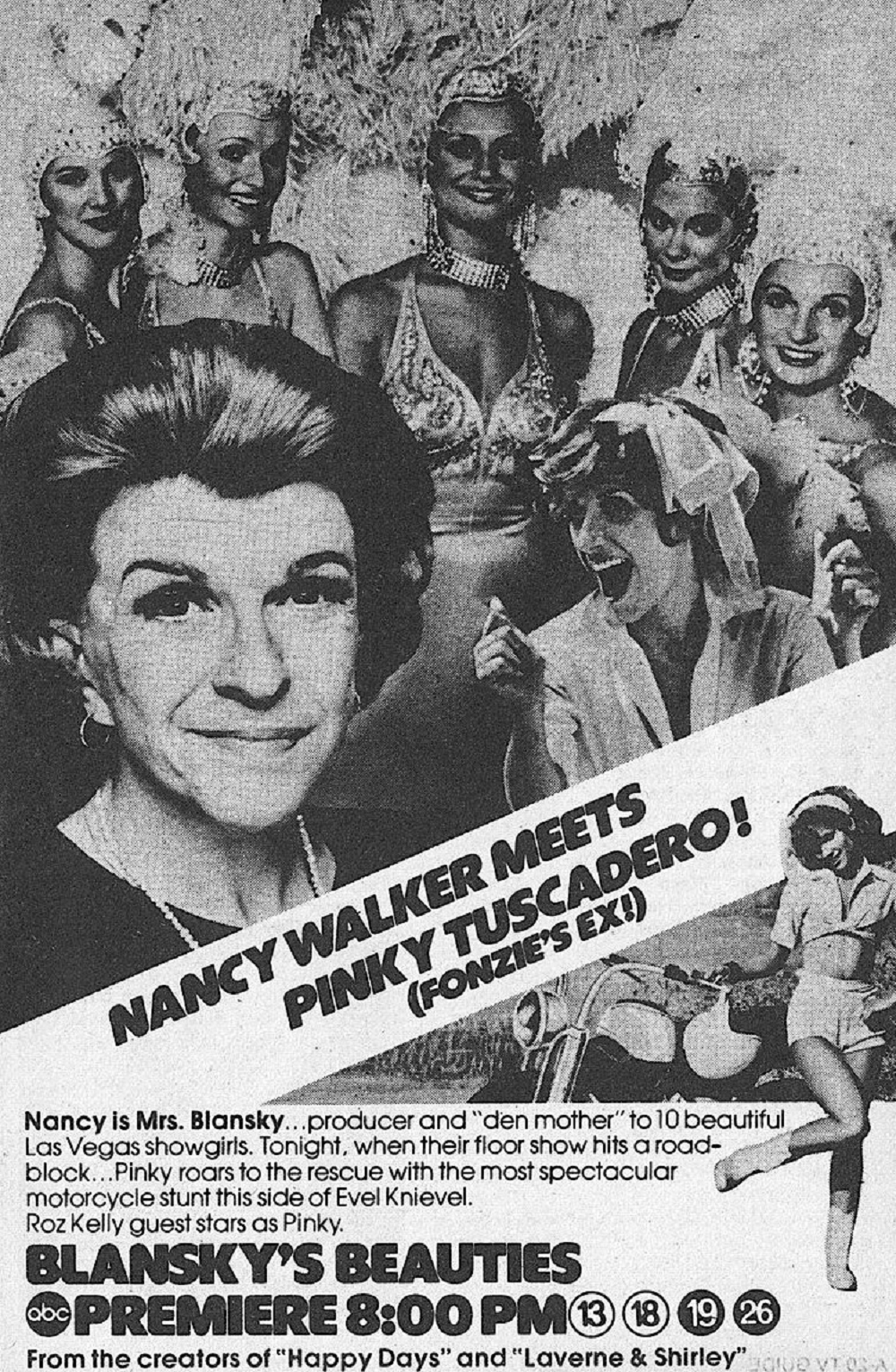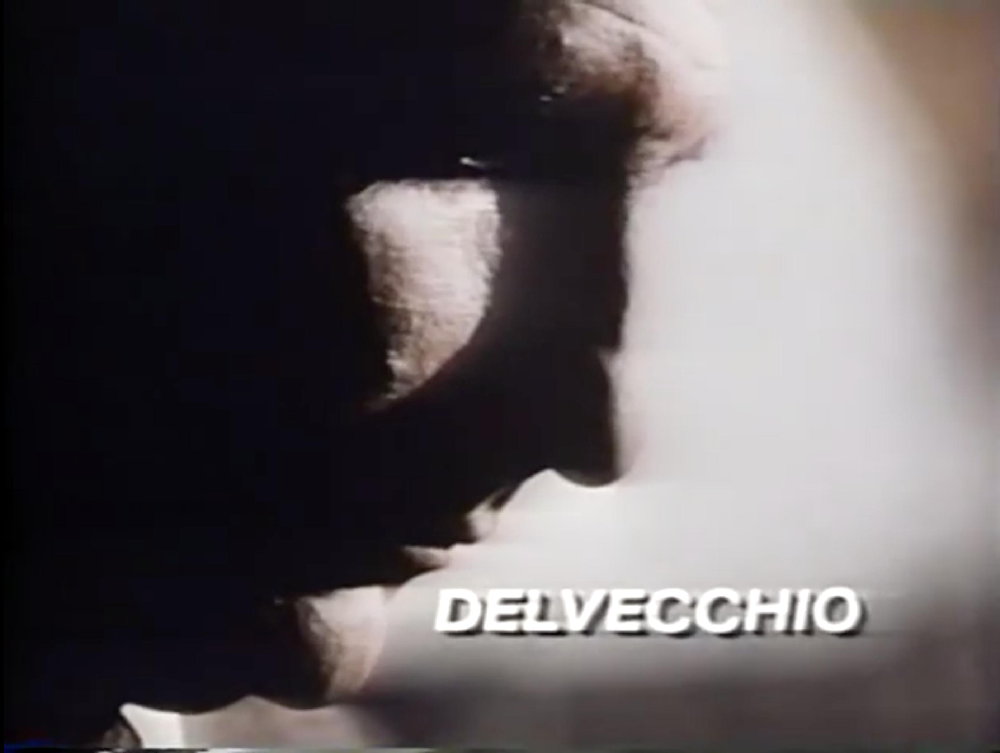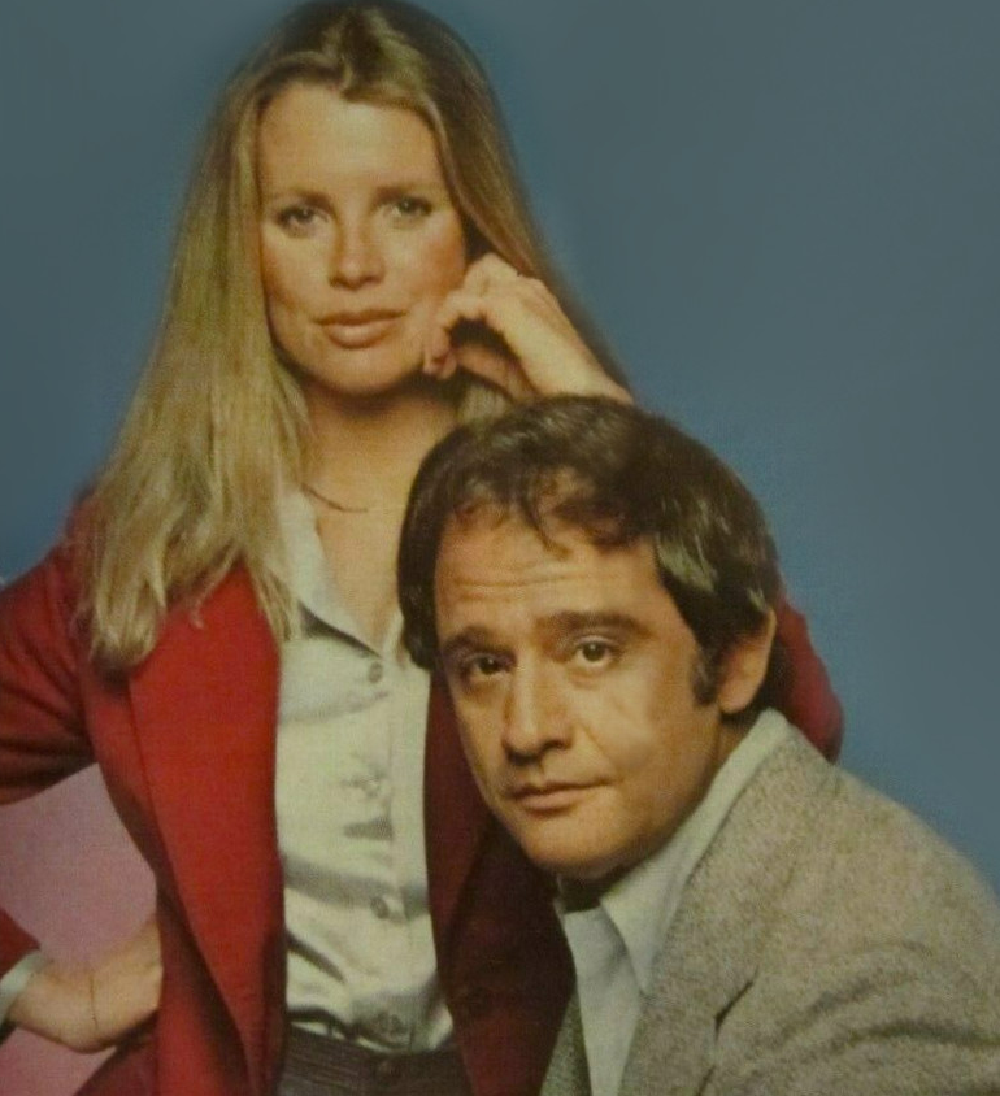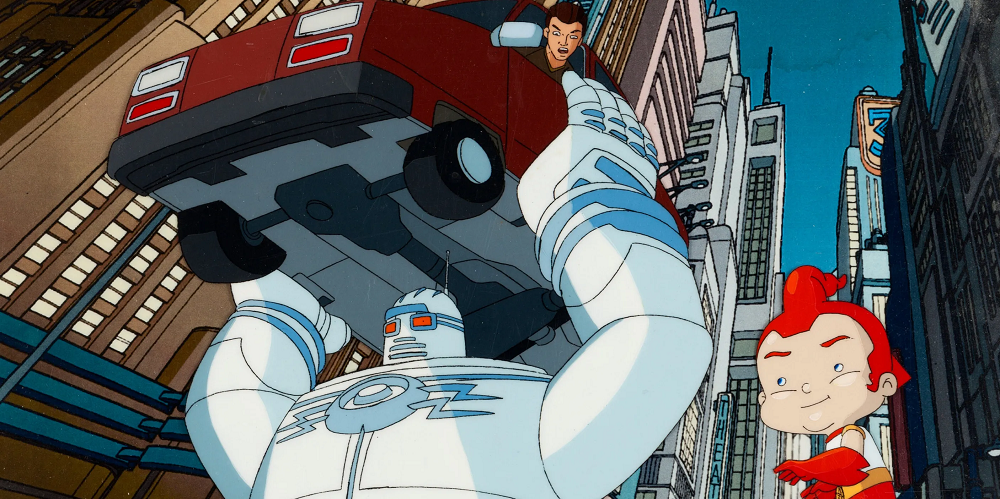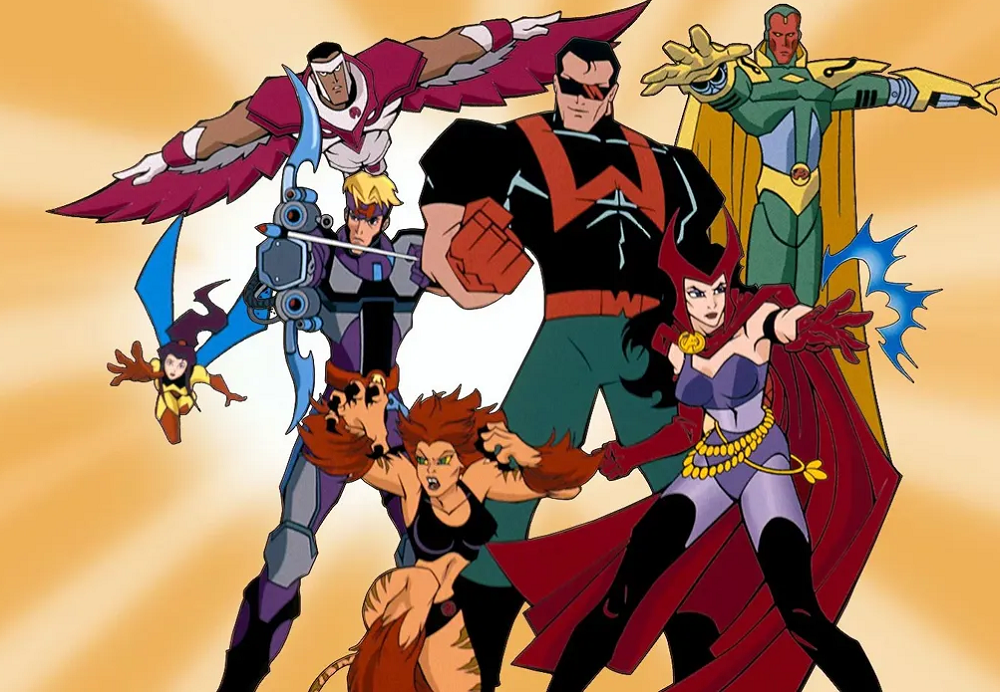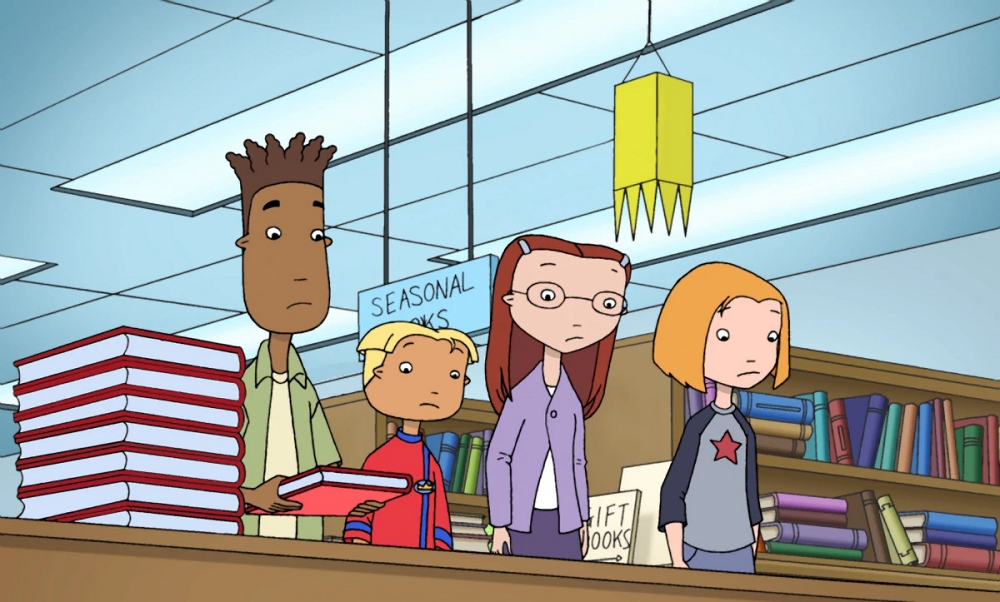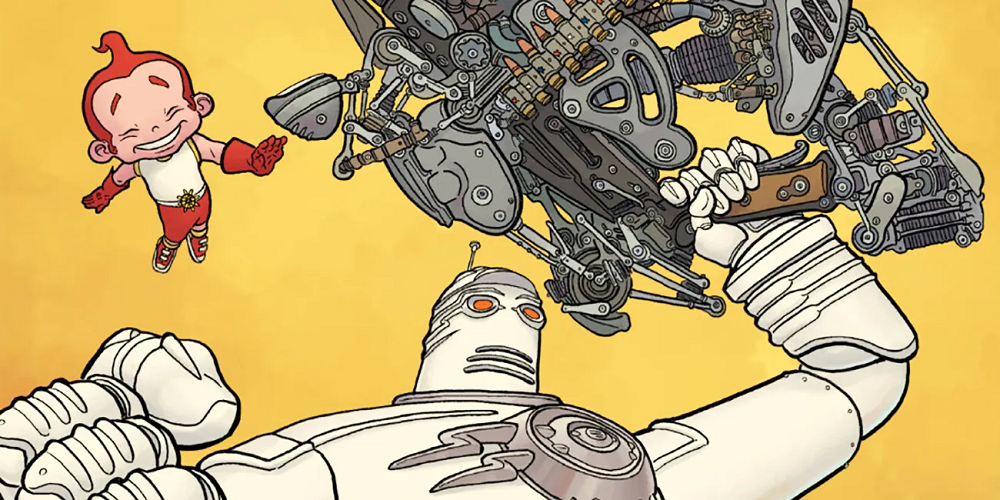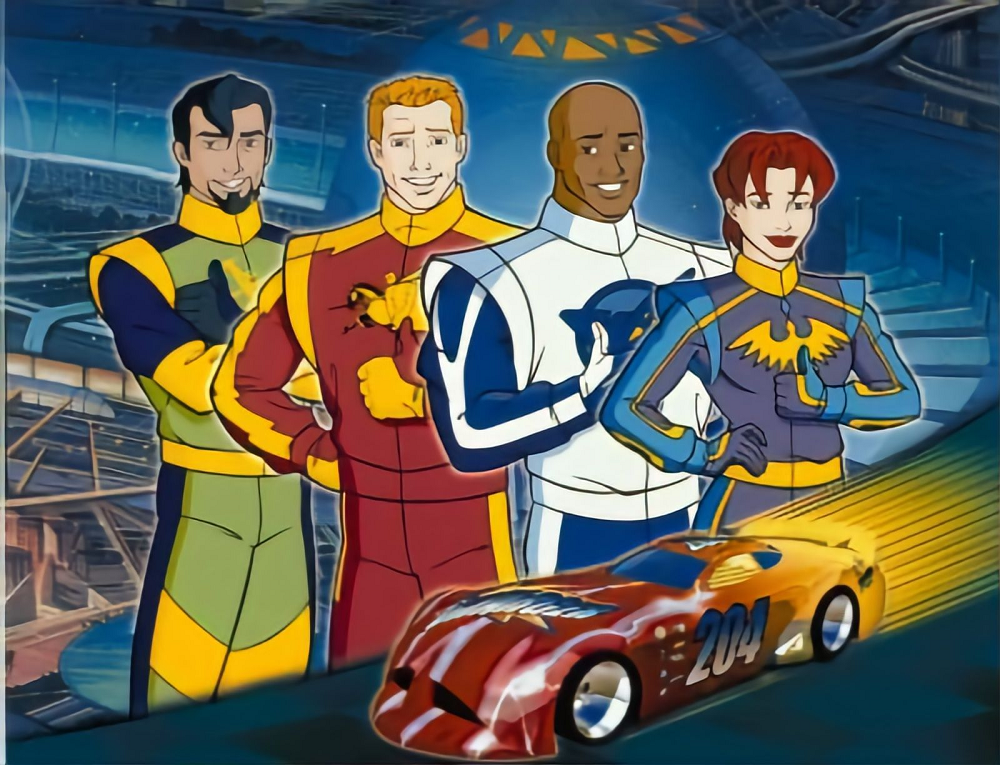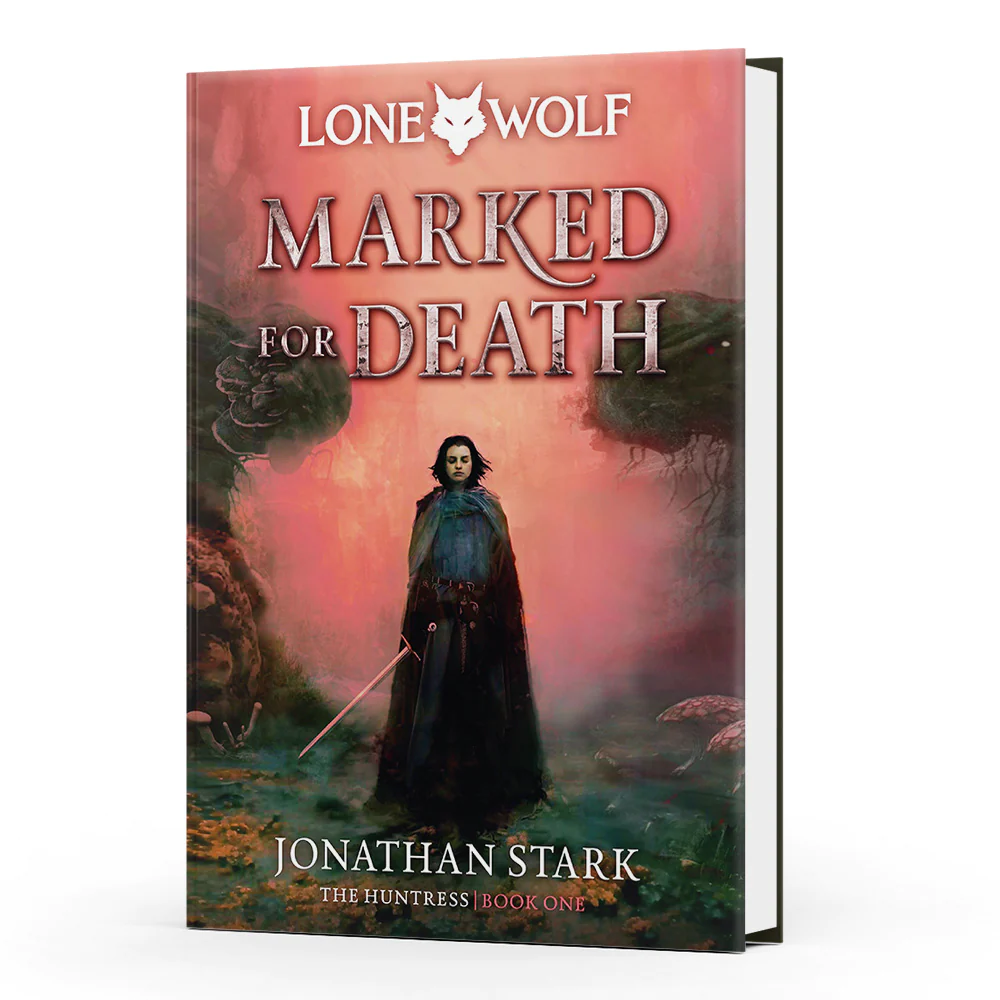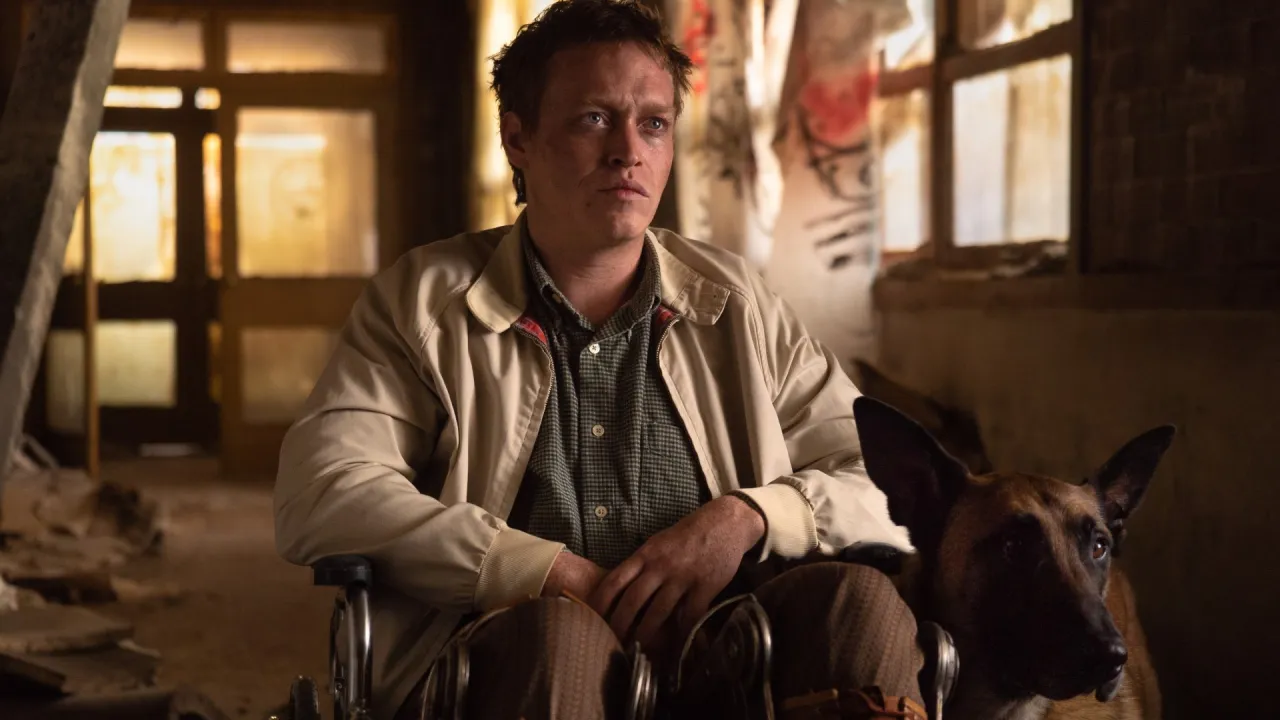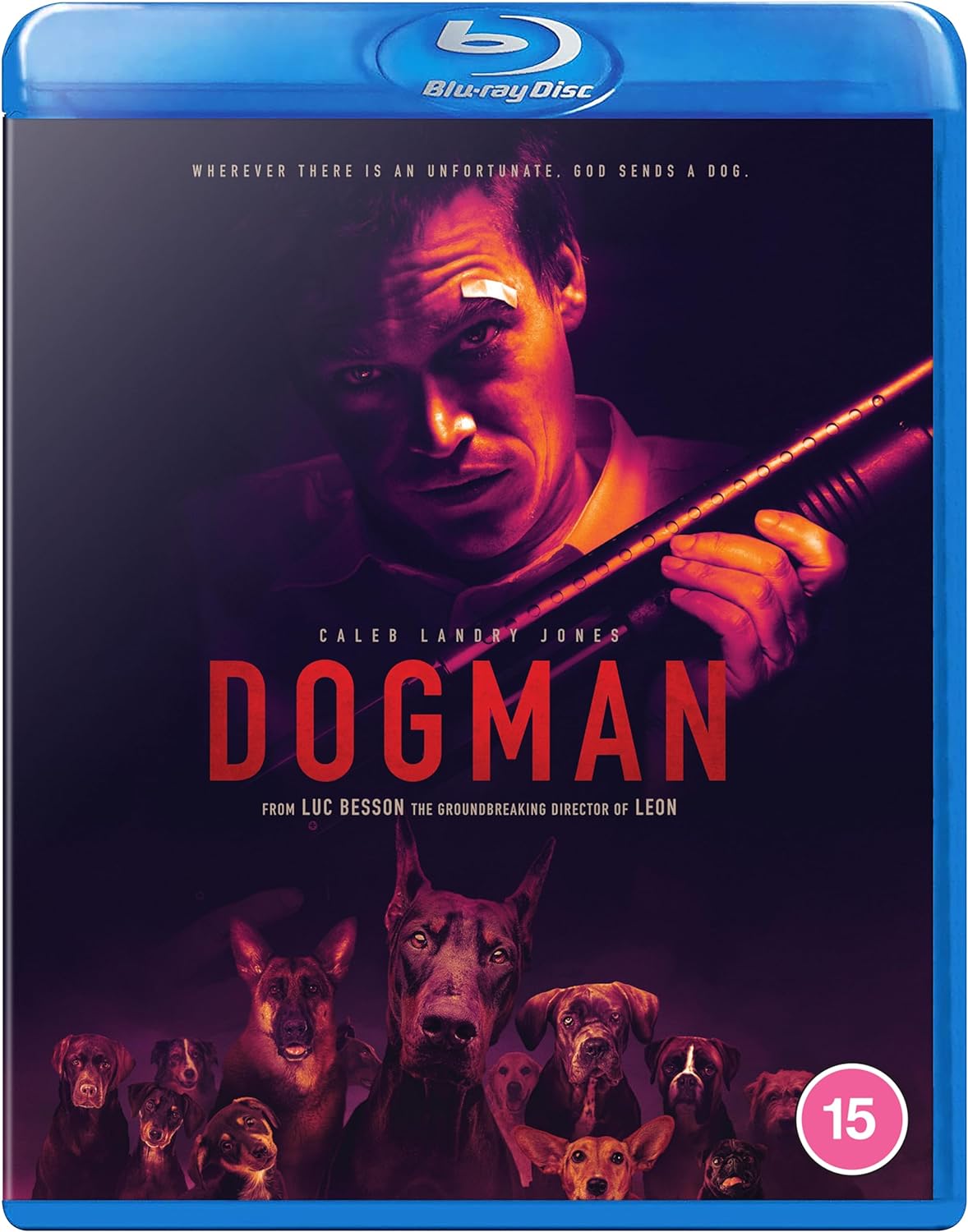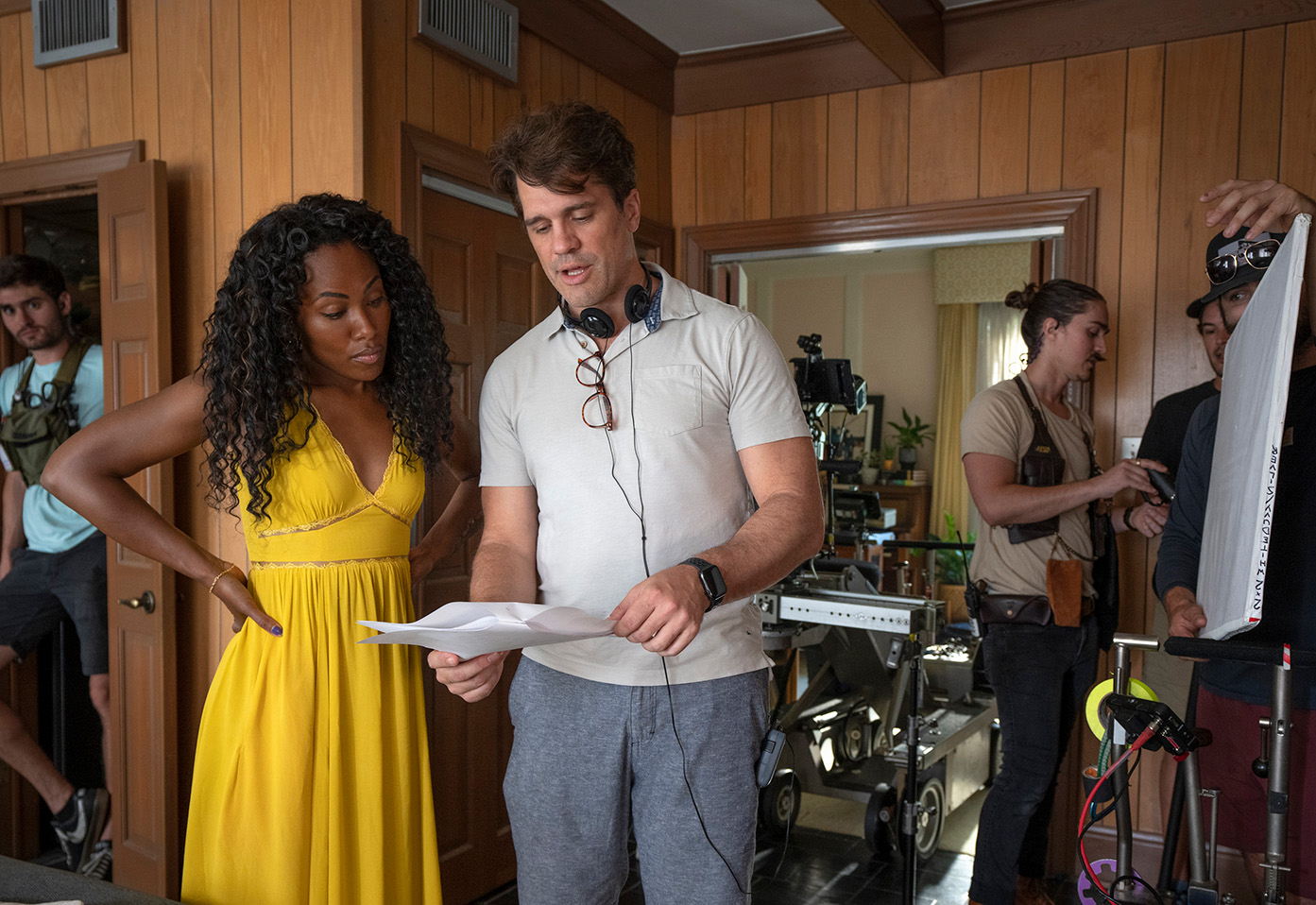Ah, telephemera… those shows whose stay with us was tantalisingly brief, snatched away before their time, and sometimes with good cause. They hit the schedules alongside established shows, hoping for a long run, but it’s not always to be, and for every Street Hawk there’s two Manimals. But here at STARBURST we celebrate their existence and mourn their departure, drilling down into the new season’s entertainment with equal opportunities square eyes… these are The Telephemera Years!
1976-77
For some reason – the US’s failure in Vietnam is often blamed – the American public could not get enough of the rock ‘n’ roll era in the 1970s, a point never more heavily underlined than with the success of Grease in 1978. It started before that, of course, with George Lucas’s American Graffiti giving birth to the Fonz on TV. It was almost as if the whole country wanted to forget the last decade or so and that Happy Days was the number one show for 1976-77 is no surprise. That spin-off Laverne & Shirley is number two is perhaps a little more surprising, but there’s Korean War comedy M*A*S*H at number four to ram things home. Outside this yearning for the past but also making headway in the TV ratings were telefantastic Jiggle TV mainstays Charlie’s Angels and The Bionic Woman, as well as The Six Million Dollar Man, Baretta, and Hawaii Five-O; if there was somewhere the US TV viewing audience wanted to be in 1976 it was not the 1976 outside their door.
Several big shows bade their farewells this season with The Streets of San Francisco finally running out of road, the departure of The Mary Tyler Moore Show and Phyllis setting women’s emancipation back a few years, and Sanford and Son a victim of America’s disposable Capitalism. Coming in to take their places were interfering coroner Quincy, bear-worrier Grizzly Adams, and Roots, the first of the blockbuster mini-series that gave schoolchildren everywhere license to say Kunta Kinte. But those were all shows that actually made it to air – what of the ones that were killed before they reached that hallowed ground? This is the story of four unsold pilots…
Gemini (ABC): Adopted as babies by a Methodist minister and his wife, Jim and Jon Hager started singing in church, displaying some talent which was encouraged when they joined the US Army, where they performed at officers’ clubs. After leaving the Army, they moved to Los Angeles and began singing in nightclubs, attracting the attention of country singer Buck Owens, who signed them to a contract and had them open for him on tour.
Owens’ patronage led to a record contract with Capitol and a regular role on country-themed variety show Hee Haw, on which they appeared for seventeen years, also appearing in the second issue of Playgirl in 1973. In 1976, their charm and unique twin appeal were noticed by Charles Fries, who had recently formed his own production company after leaving Metromedia, where his hits included The Undersea World of Jacques Cousteau.
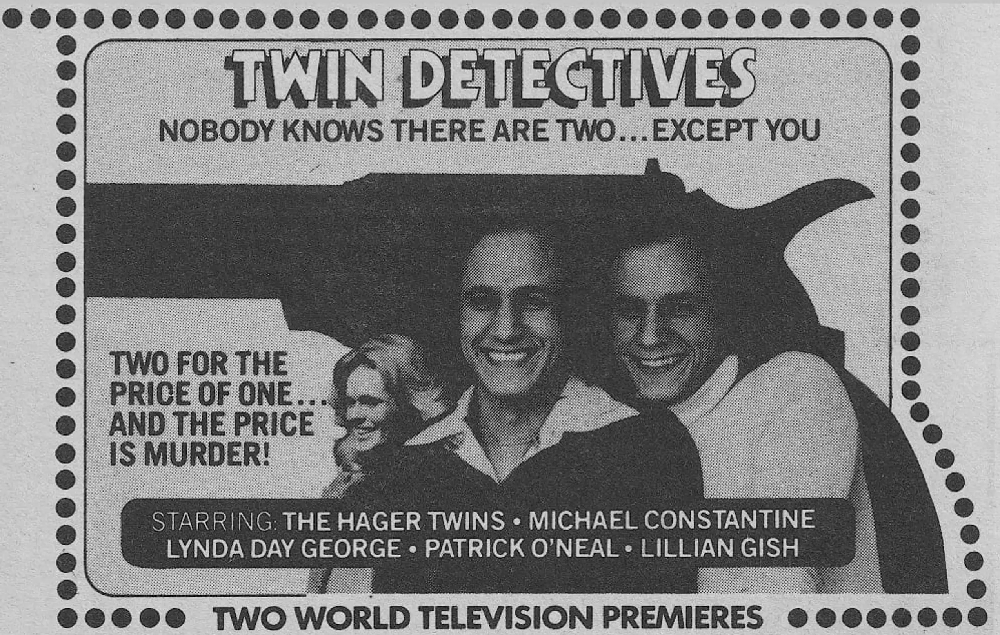
Fries stock in trade was in slightly unusual TV pilots, although his early record of getting them taken to series was not encouraging, having already failed to find a buyer for Strange Homecoming (with Robert Culp), Peter Graves starrer Where Have All the People Gone?, and Last Hours Before Midnight, featuring Ed Lauter, amongst a slew of others. With the Hagers on board, though, he couldn’t possibly fail, especially with a script written by Robert Specht, who had created the ambitious The Immortal in 1969.
In Gemini, the Hager Twins starred as Tony and Shep Thomas, a pair of private detectives looking to take down a ring of phony psychics, only to wind up in the middle of a murder investigation. Fries managed to get Lillian Gish – the first lady of American cinema – to make her first appearance since the 1969 TV remake of Arsenic and Old Lace with Helen Hayes, and hired TV veteran Robert Day to direct.
Sadly, after expressing earlier interest, ABC passed on a full series featuring the brothers using their identical charms to solve crimes, but did show the pilot as a TV movie in May 1976 under the title Twin Detectives. The Hager Twins returned to Hee Haw and to their singing careers, although their last single – 1975’s “Hot Lips” – had failed to chart. In 1978, they were cast as cloned alien detectives Verm and Dier on an episode of The Bionic Woman, but otherwise the world remained untroubled by their slightly creepy charisma until their deaths in 2008 and 2009.
Bell, Book and Candle (NBC): Based on a 1950 Broadway play, the 1958 movie Bell, Book and Candle starred Kim Novak as a witch who casts a love spell on neighbour James Stewart in contemporary Greenwich Village. Bewitched creator Sol Saks claimed the film inspired the story of Samantha and Darrin and in 1976 TV producer Bruce Lansbury decided that the time was right to try a series directly taken from John van Druten’s play.
Lansbury, the brother of actress Angela, had cut his teeth producing The Wild, Wild West and Mission Impossible, and had created The Magician for Bill Bixby in 1974. Lansbury set Richard de Roy, who’d done the same movie to TV adaptation for Guess Who’s Coming to Dinner? a year earlier, to work on the script, and secured his leads in Yvette Mimieux and Michael Murphy.
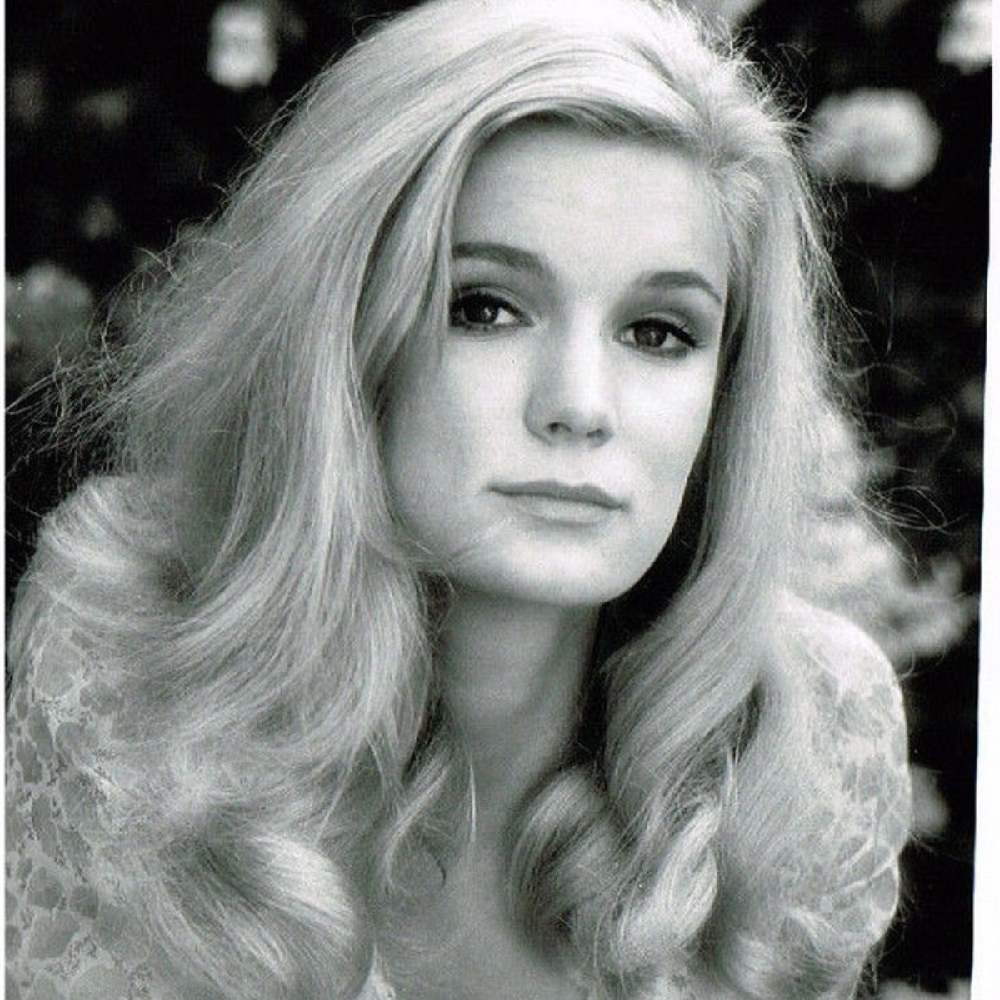
From her breakout role in The Time Machine in 1960, Mimieux had been one of the most sought-after actresses of the 1960s but an earlier attempt to cross over into TV with The Most Deadly Game in 1971 had lasted just twelve episodes. Unhappy with the roles she was offered, she wrote a script of her own featuring an almost immoral assassin. Aaron Spelling agreed to produce Counterpoint, as it was then titled, and cast Mimieux in the starring role, but the ABC network insisted on a number of changes, softening some of Mimieux’s edges and retitling it Hit Lady before airing it as a TV movie in October 1974.
By 1976, Mimieux was back doing guest roles and TV movies as work for hire but Lansbury thought her perfect for the role of witch Gil Holroyd and was impressed with her chemistry with Murphy, a regular in the films of Robert Altman. A thirty-minute pilot was directed by M*A*S*H veteran Hy Averback and shown on NBC in September 1976 but attracted poor reviews and no interest from the network as a full series. After the failure, Lansbury took work as a supervising producer on Wonder Woman and Buck Rogers in the 25th Century but would eventually achieve telephemera nirvana in 1985 when he created Street Hawk.
Stranded (ABC): If I were to describe a TV show where a group of people struggle to survive on an island in the South Pacific after their airplane crashes during a routine commercial flight, you’d probably think I was talking about Lost, right? To be fair, I do talk about Lost a lot, but in this case I’m talking about Stranded, a 1976 pilot starring Kojak sidekick Kevin Dobson.
The title had earlier been used for a 1966 unsold pilot starring Lloyd Bridges that was retooled as Lost Flight for another unsold pilot in 1970 – given a limited theatrical release a year later – and some of the footage from that film was used in the 1976 pilot, which also approximated its setting and its basic plot. In this Stranded, written by The Sixth Sense creator Anthony Lawrence, Dobson played New York detective Rafe Harder, whose flight to Australia comes down on a mysterious island, forcing him to take the lead and organise his rag-tag fellow survivors in the hope that they will be discovered.
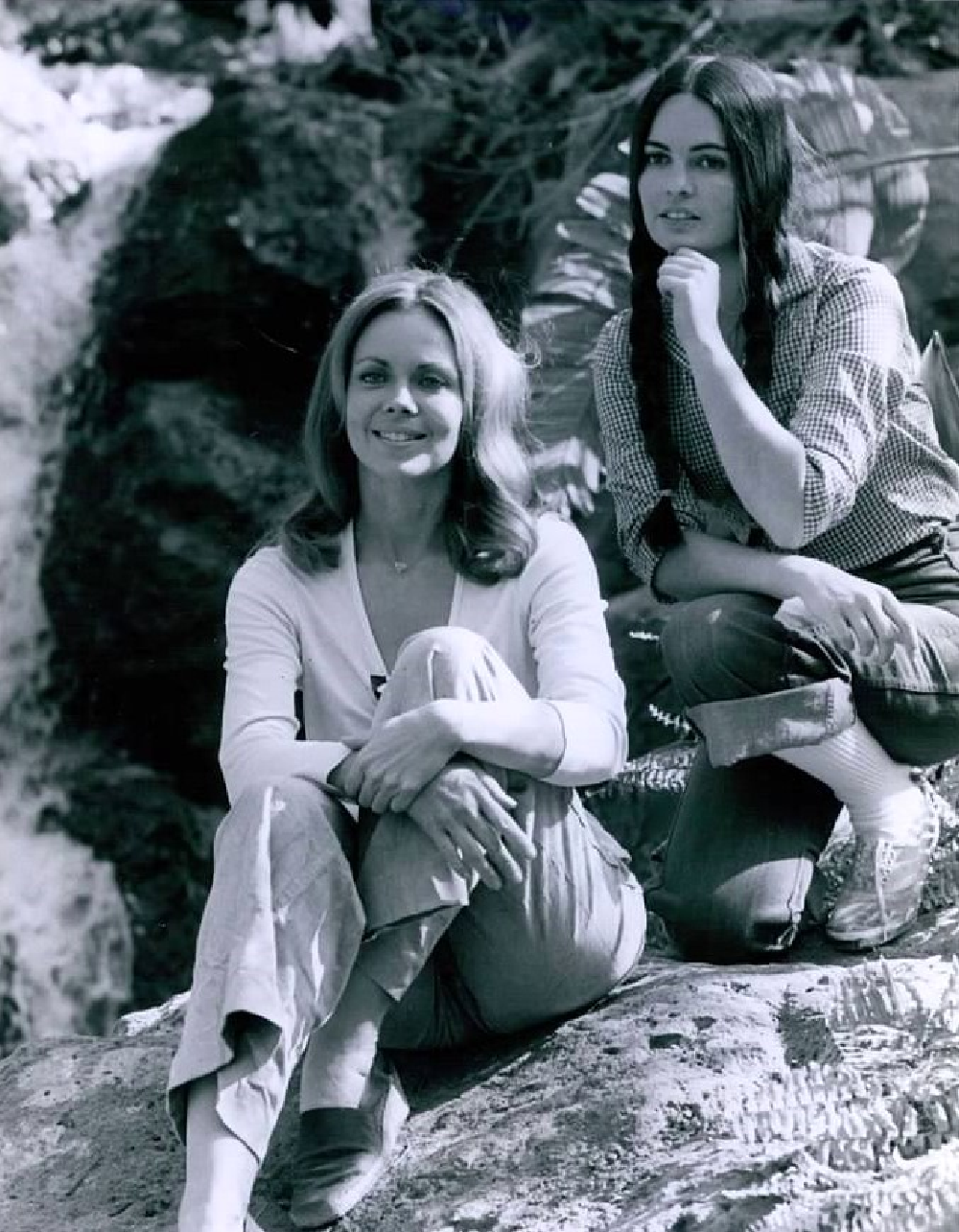
Joining Dobson on the island were brash young woman Crystal Norton (Dark Shadows‘s Lara Parker), a housewife widowed in the crash (veteran B movie actress Marie Windsor), a young black stowaway (unfortunately named Ali Baba), a retired engineer, and teenage siblings played by Devon Ericsson and Jimmy McNichol. It’s this motley crew that Harder has to corral but does the island harbour more threats?
Directed by TV veteran Earl Bellamy, Stranded aired in May 1976 in the Saturday night slot usually reserved for SWAT, but there wasn’t enough interest in the pilot for ABC to take it to series, just as their hadn’t been when producer Frank Price had tried in 1966 and 1970. The 1976 Stranded was his last try with the concept and he left TV two years later to become head of Columbia Pictures, where he would greenlight Kramer vs Kramer, Gandhi, and Ghostbusters. He continued working until 2001, three years before Oceanic Flight 815 left from Los Angeles, bound for Sydney…
Alias Sherlock Holmes (NBC): After finishing up on Dream of Jeannie in 1970, Larry Hagman struggled to find another show for his considerable comedic and dramatic talents. 1971’s The Good Life lasted for just fifteen episodes, with Here We Go Again two years later faring even worse, and efforts to break into movies in Harry and Tonto and Mother, Juggs and Speed met with mixed success, even if his directorial debut Beware! The Blob does retain a certain B-movie charm.
Inspired by the 1971 movie version of James Goldman’s play They Might Be Giants, writers Dean Hargrove and Roland Kibbee – who began working together on It Takes a Thief and continued their partnership with Columbo – created the character of Sherman Holmes, a motorcycle cop for the Los Angeles Police Department who is not cut out for a life on two wheels. After receiving a blow to the head when his motorcycle falls on him while he is reading Sherlock Holmes, he starts to believe he is the fictional detective.
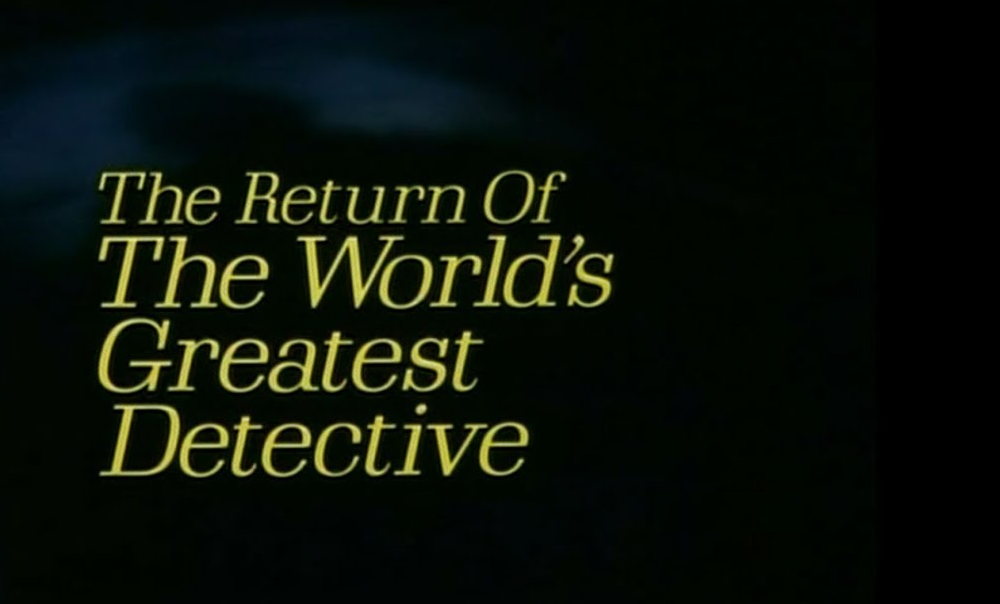
Hagman was cast as Sherman, who soon adopts a deerstalker and cape, setting out to solve a murder accompanied by his social worker and psychiatrist, Dr Joan Watson (newcomer Jenny O’Hara), possessing deductive skills he did not have as an inept patrolman. Hargrove directed the pilot, in which Holmes neatly wraps up a series of crimes and exposes a case of judicial corruption, and the chemistry between he and O’Hara boded well for the inevitable series that would follow.
For whatever reason, that wasn’t to be. The pilot was shown in June 1976 as The Return of the World’s Greatest Detective and was reviewed favourably, but NBC passed on a series and, within two years, Hagman was cast as JR Ewing on a five-episode mini-series called Dallas that few expected to go anywhere, with even its creator admitting he should have called it Houston…
Next time on The Telephemera Years: It’s Saturday morning in 1976 – what are the kids watching?
Check out our other Telephemera articles:
The Telephemera Years: pre-1965 (part 1, 2, 3, 4)
The Telephemera Years: 1966 (part 1, 2, 3, 4)
The Telephemera Years: 1967 (part 1, 2, 3, 4)
The Telephemera Years: 1968 (part 1, 2, 3, 4)
The Telephemera Years: 1969 (part 1, 2, 3, 4)
The Telephemera Years: 1970 (part 1, 2, 3, 4)
The Telephemera Years: 1971 (part 1, 2, 3, 4)
The Telephemera Years: 1973 (part 1, 2, 3, 4)
The Telephemera Years: 1974 (part 1, 2, 3, 4, 5)
The Telephemera Years: 1975 (part 1, 2, 3, 4)
The Telphemera Years: 1976 (part 1, 2)
The Telephemera Years: 1977 (part 1, 2, 3, 4)
The Telephemera Years: 1978 (part 1, 2, 3, 4)
The Telephemera Years: 1980 (part 1, 2, 3, 4)
The Telephemera Years: 1981 (part 1, 2, 3, 4)
The Telephemera Years: 1982 (part 1, 2, 3, 4)
The Telephemera Years: 1983 (part 1, 2, 3, 4)
The Telephemera Years: 1984 (part 1, 2, 3, 4)
The Telephemera Years: 1986 (part 1, 2, 3, 4)
The Telephemera Years: 1987 (part 1, 2, 3, 4)
The Telephemera Years: 1989 (part 1, 2, 3, 4)
The Telephemera Years: 1990 (part 1, 2, 3, 4)
The Telephemera Years: 1992 (part 1, 2, 3, 4)
The Telephemera Years: 1995 (part 1, 2, 3, 4)
The Telephemera Years: 1997 (part 1, 2, 3, 4)
The Telephemera Years: 1998 (part 1, 2, 3, 4)
The Telephemera Years: 1999 (part 1, 2, 3, 4)
The Telephemera Years: 2000 (part 1, 2, 3, 4)
The Telephemera Years: 2002 (part 1, 2, 3, 4)
The Telephemera Years: 2003 (part 1, 2, 3, 4)
The Telephemera Years: 2005 (part 1, 2, 3, 4)
The Telephemera Years: 2006 (part 1, 2, 3, 4)
The Telephemera Years: 2008 (part 1, 2, 3, 4)
The Telephemera Years: O Canada! (part 1, 2, 3, 4)
Titans of Telephemera: Irwin Allen
Titans of Telephemera: Stephen J Cannell (part 1, 2, 3, 4)
Titans of Telephemera: DIC (part 1, 2)
Titans of Telephemera: Hanna-Barbera (part 1, 2, 3, 4, 5)
Titans of Telephemera: Kenneth Johnson
Titans of Telephemera: Sid & Marty Krofft
Titans of Telephemera: Glen A Larson (part 1, 2, 3, 4)

